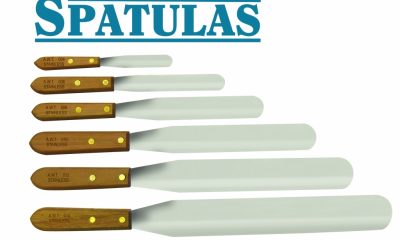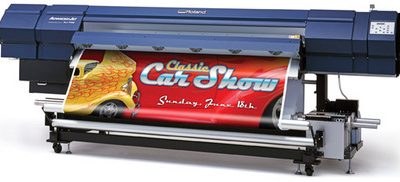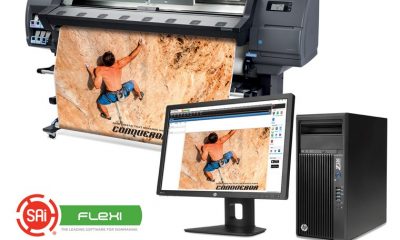Business & Industry
Published
19 years agoon
In my previous column, I talked about the manner in which most of us ended up managing screen-printing shops and concluded that, whether we are the owners of our own businesses or simply screen printers who worked our way into supervisory roles, nearly all of us share a common bond. We all learned screen printing the hard way.
Until recently, there were no college classes to help us deal with the kind of problems that we have to handle every day. And even if there were, we probably wouldn’t have taken them. Let’s face it, very few of us set out to spend our lives doing this. Most of us fell into our positions by chance. Managing a screen-printing facility can be a highly rewarding way to spend your working life, but if you’re not careful, it can end up being one of the most frustrating things you will ever do.
As you know, the print shop is littered with the mistakes of previous managers. Many of them left when the frustration overcame them; others left because the frustration overcame the goodwill of their superiors. How will you make sure that you don’t join these ranks? How will you make your work experience stimulating for you, enjoyable for your staff, and ultimately profitable for your company?
As I noted in my last article, a good way to do this is to step back for a moment and formulate a philosophy based on a realistic appraisal of yourself, your staff, the work you all do, and—most importantly—the process that enables you to manage all three. After 25 years of managing screen shops, I have formulated a few basic truths as I see them. I’ll limit my discussion this month to three of them.
Truth #1: You are not responsible for production in your department.
Instead, you are responsible for putting in place the process that generates the production. The production output of your department is the measurement that you use to gauge the success of the process you put in place.
It is necessary to define and understand the process in its simplest form. I came up with the following analogy, and it has worked well for me. Think of the press as the engine that drives the process. In order to make the engine run as efficiently as possible, it is necessary to supply it with fuel and the spark that creates the energy that moves the product through. The spark is the screen printer who actually causes the squeegee
to be pulled across the screen. The fuel is the ink and the substrate to be printed and the tools to do the actual printing. To make this system efficient, it is necessary to make sure that these elements are always present and perform routine maintenance to minimize any downtime on the press.
The next job up on the press should always be staged and waiting along with high-quality screens, properly exposed images, the correct ink colors, an up-to-date work order, and sharp squeegees. I believe it is absolutely necessary to have at least one person in the department whose job is to make sure that this takes place. The screen printer should never have to search for blanks, ink, squeegees, etc. The transition from one job to the next should be seamless. Make sure your process is set up so that these things happen. You may be surprised to learn that there are many companies out there that still don’t do things this way. If yours is one of them, you’ll be surprised by the increased output this simple change will deliver.
It’s very important for you, as a manager, to establish that what you are doing is helping to increase production. Don’t rely on the people above you to tell you whether things are getting better or not. Establish some simple, but effective, tools that will allow you to monitor the most important part of your process: your shop’s overall productivity. Whatever your final product is, make sure that you know how many you make every day. Know how much scrap is being generated and how many man hours are involved.
With these measurements at hand, you can see immediately whether your process tweaking is having an effect. Be brutally honest, and don’t try to rationalize your way through this one. If you’re not seeing any improvement, then you have solid proof that you are not succeeding. Try something different. Keep these figures in your back pocket at all times, and share them with your staff and your bosses. I have won many an argument with both screen printers and upper management by pulling out this piece of paper. The facts are tough to dispute, but remember that it works both ways. If you’re a company owner, you should be doing this routinely because screen-printing businesses live and die by these simple measurements.
Truth #2: The only way that the work gets done is by doing it.
Don’t get overwhelmed by the task at hand. You climb the mountain one foothold at a time. Make
a plan and stick to it. Prioritize what needs to be done and make sure it gets done. If you keep plugging away, things will usually look better at the end of the day. Try to stay calm. However grave things may appear, just remember that you will probably look back in a year and laugh about it (if you are doing your job properly). Before you go home, analyze what worked and what didn’t, and tweak the process the next day to reflect what you have learned. Every day is an experiment.
Also remember that working long hours is never profitable in the long run. Employees burn out, scrap goes up, and your company ends up paying time and a half for a large amount of its output. Try to keep within the profitable 40-hour week, and if you have to work overtime, make sure it is as productive and free of aggravation as it can be. There is no more important time for efficiency than at the end of a long day or week. Keep your employees working smart, and keep them working happy. Don’t burn yourself out either—that doesn’t help anyone.
Truth #3: Change is inevitable.
Be proactive, but realize that it takes time to develop an efficient print shop. Implement at least one positive, non-disruptive, well-thought-out change every day. You can implement more, but make sure you never go home without improving at least one part of your process.
Look for and adopt ways to streamline the process. If you do this at least once every day, you will find that, in a very short time, you’ve made some really significant improvements. Encourage your employees to do this as well. Remember that the person who is doing the job often has the solution to a lot
of problems. It’s your duty to listen to them. When you look back after a year, you will discover that you have transformed your entire work environment for the better.
You can handle these truths
There are other truths that I’ll cover in future columns, but these three will give you a good start. As you implement these changes, explain to your employees what you are doing so that they understand the reasons behind your decisions. It’s very easy to take the lazy route and use your authority to force your staff to adopt your changes without question, but it makes more sense to explain it, get their input, and move forward with some kind of consensus. You will find that once your staff buys into your program, they will get as involved with the process as you are, and everyone will become dedicated to the same goals. These goals will ultimately make you and your company successful.
About the author
Gordon Roberts has a history in screen-printing production management that spans more than 25 years. He has held supervisory positions in shops that represent a broad spectrum of application areas and markets, including printed electronics, apparel, signage, and retail graphics. Roberts has presented training courses on the basics of screen-printing production and on shop management for the Screentech Institute and is presently a consultant for the screen industry.

Subscribe

Magazine
Get the most important news
and business ideas from Screenprinting Magazine.
Most Popular
-

 Case Studies2 months ago
Case Studies2 months agoHigh-Density Inks Help Specialty Printing Take Center Stage
-

 Art, Ad, or Alchemy2 months ago
Art, Ad, or Alchemy2 months agoF&I Printing Is Everywhere!
-

 Andy MacDougall2 months ago
Andy MacDougall2 months agoFunctional and Industrial Printing is EVERYWHERE!
-

 Columns3 weeks ago
Columns3 weeks ago8 Marketing Mistakes Not to Make When Promoting Your Screen Printing Services Online
-

 Editor's Note3 weeks ago
Editor's Note3 weeks agoLivin’ the High Life
-

 Marshall Atkinson3 weeks ago
Marshall Atkinson3 weeks agoHow to Create a Winning Culture in Your Screen-Printing Business
-

 Thomas Trimingham2 months ago
Thomas Trimingham2 months ago“Magic” Marketing for Screen Printing Shops
-

 News & Trends2 months ago
News & Trends2 months agoWhat Are ZALPHAS and How Can You Serve Them in Your Print Business?






